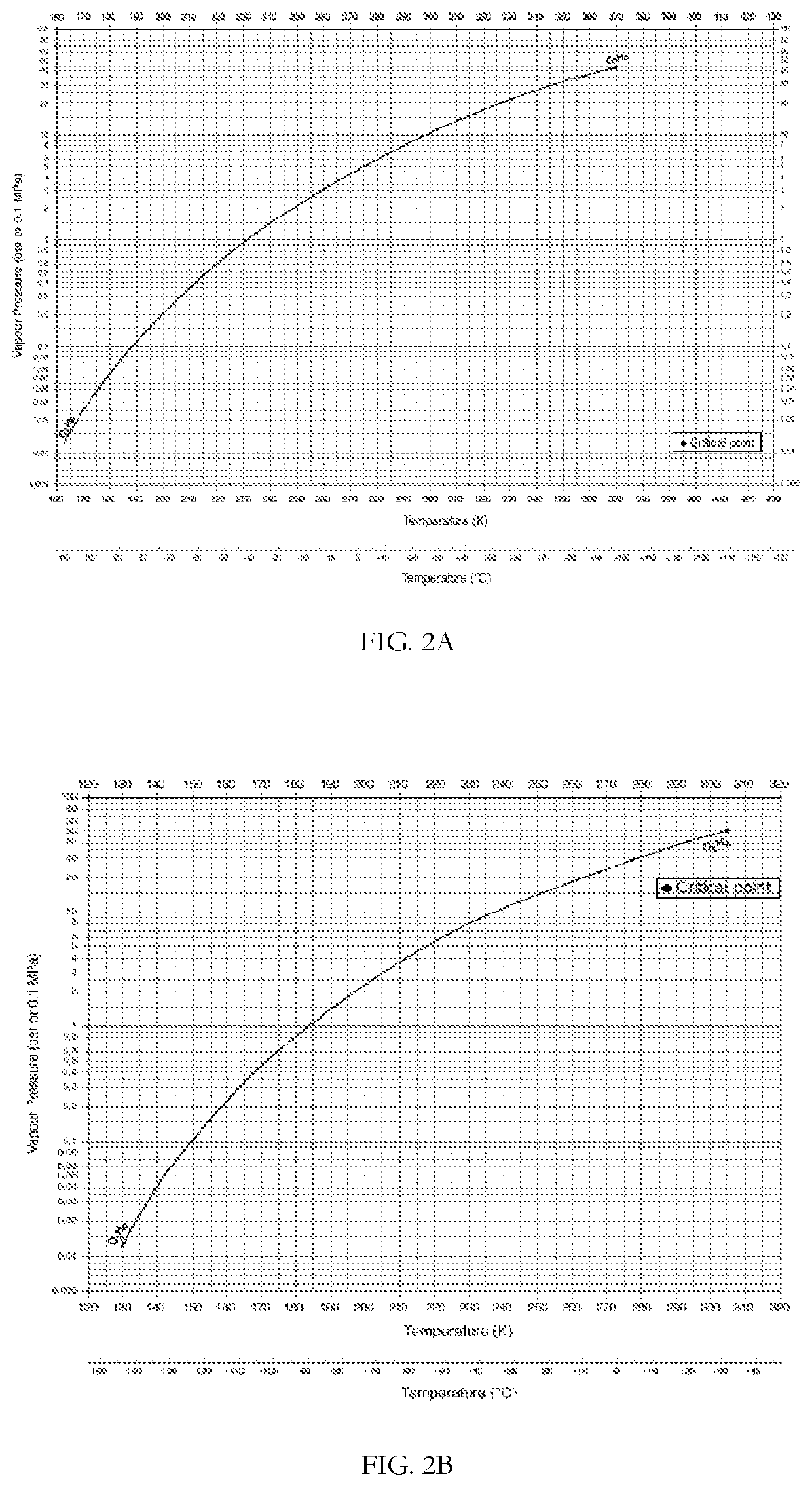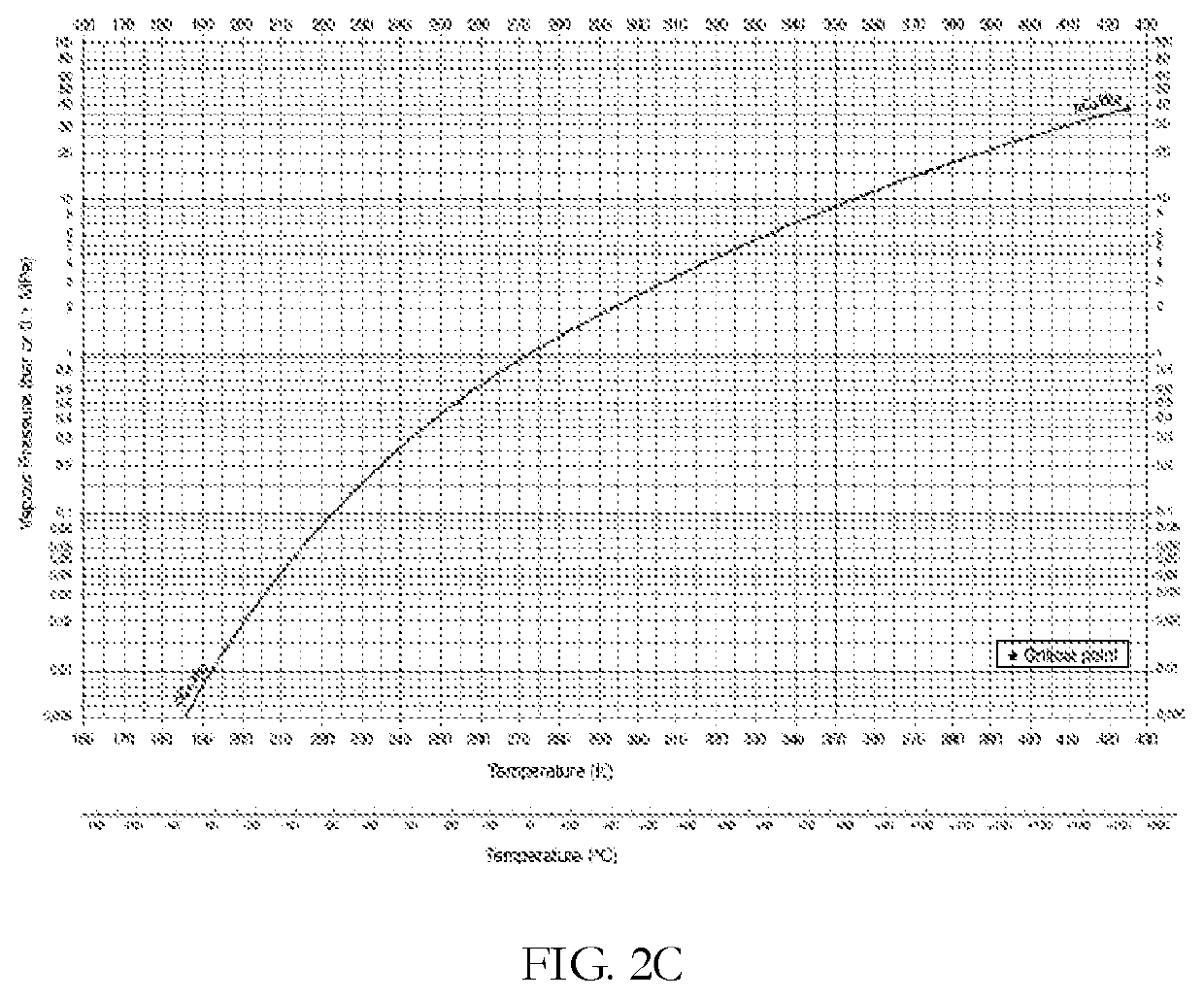Supersonic treatment of vapor streams for separation and drying of hydrocarbon gases
a technology of hydrocarbon gas and vapor stream, which is applied in the direction of carbonyl compound preparation by oxidation, hydrocarbon oil treatment products, separation processes, etc., can solve the problems of increasing the probability, increasing the droplet volume, and enhancing the potential for collection, so as to reduce the moisture content of a vapor stream
- Summary
- Abstract
- Description
- Claims
- Application Information
AI Technical Summary
Benefits of technology
Problems solved by technology
Method used
Image
Examples
example 1
Separation of Propane from a Propane / Air Mixture
[0198]Separation of propane from a gas stream of mixture of air and propane gas may be accomplished using a de Laval nozzle, where the gas-stream is at an initial pressure of 21 bar, and an initial temperature of 313° K. The gas mixture contains 20 mol % propane at partial pressure P1 and 80 mol % air at partial pressure P2; by the relationship P=P1+P2, the mixture under these initial conditions contains air at a partial pressure of 16.8 bar and propane at a partial pressure of 4.2 bar. Since the mixture is predominantly air, γ is assumed to be ˜1.4.
[0199]FIG. 2A shows the equilibrium vapor pressure of propane (bar) as a function of temperature (degrees K). Table 2 shows the change in temperature and propane partial pressure as the gas accelerates from Mach 1, at the nozzle throat, to Mach 2.
[0200]
TABLE 2Propane Partial Pressure (Bar) in a de Laval Nozzle.PropanePropaneVelocityT (Air,P / PoPartialEquilibrium(Mach)degrees K)(γ = 1.4)Press...
example 2
Separation of Propane from a Propane / Ethane Mixture
[0204]Use of a de Laval nozzle also allows separation of propane from a mixture of ethane gas and propane gas at an initial pressure of 21 bar, and an initial temperature of 313° K. The gas mixture contains 20 mol % propane at partial pressure P1 and 80 mol % propane at partial pressure P2; by the relationship P=P1+P2, the mixture under these initial conditions contains ethane at a partial pressure of 16.8 bar and propane at a partial pressure of 4.2 bar. The term γ is assumed to be substantially constant at ˜1.3, as the mixture is a mixture of hydrocarbon gases.
[0205]FIG. 2A and FIG. 2B shows the equilibrium vapor pressures of propane and ethane (bar), respectively, as a function of temperature (degrees K). Table 3 presents the change in temperature and partial pressures as the gas accelerates from Mach 1, at the nozzle throat, to Mach 3. At the nozzle throat (Gas velocity c=Mach 1), the partial pressures of ethane and propane in t...
example 3
Separation of C3 Hydrocarbons from a Hydroformylation Waste Gas Stream
[0209]A simulated process purge stream was examined in the supersonic separator model, where the stream contains the following gases, expressed in terms of mol % of the total: Hydrogen 43%, nitrogen 14%, carbon monoxide 13%, carbon dioxide 3%, methane 3%, ethane 0.5%, propane 21%, and propene 1.5%. Thus, about 86% of the hydrocarbon gases were C3 hydrocarbons (propane and propene). The process stream was simulated at 305 psig [21.03 bar (g)] and a flow rate of 40 thousand standard cubic feet per minute. Table 4 shows the C3 fraction recovery as a function of feed temperature. The C3 recovery is defined as mass fraction of C3s in liquid relative to the total C3s in feed. Each stage of C3 hydrocarbon separation from a supersonic gas stream was modeled in a bench-scale de Laval nozzle capable of a ˜Mach 2 expansion.
[0210]
TABLE 4C3 Recovery from a Hydroformylation Waste StreamFeed TemperatureC3 Recovery(C.)(%)40172028...
PUM
| Property | Measurement | Unit |
|---|---|---|
| boiling point | aaaaa | aaaaa |
| boiling point | aaaaa | aaaaa |
| pressure | aaaaa | aaaaa |
Abstract
Description
Claims
Application Information
 Login to View More
Login to View More - R&D
- Intellectual Property
- Life Sciences
- Materials
- Tech Scout
- Unparalleled Data Quality
- Higher Quality Content
- 60% Fewer Hallucinations
Browse by: Latest US Patents, China's latest patents, Technical Efficacy Thesaurus, Application Domain, Technology Topic, Popular Technical Reports.
© 2025 PatSnap. All rights reserved.Legal|Privacy policy|Modern Slavery Act Transparency Statement|Sitemap|About US| Contact US: help@patsnap.com



